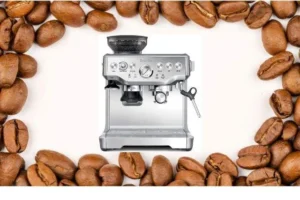Coffee Roasting Levels: The Art, Science and Impact on Flavor
An Introduction to Coffee Roasting Levels
The art of coffee roasting involves applying heat to green coffee beans to achieve the desired roast level. This impacts the flavors and aromas of the final brewed coffee. There are light, medium, and dark roast levels, each with its own characteristics. Understanding coffee bean roasting levels enables optimizing the bean’s potential.
The Significance of Coffee Bean Roasting Levels
Coffee bean roasting levels significantly influence the flavor profile and sensory experience of brewed coffee. Lighter roasts accentuate the bean’s inherent flavors while darker roasts develop more roast-induced notes. Moreover, different roasting levels complement particular coffee bean varieties and origins.
Coffee Bean Roasting Levels Key Takeaways
- Roasting Impacts Flavor: Different roasting levels profoundly affect the flavor and aroma of coffee, from light to dark roasts, and espresso.
- Bean Characteristics Matter: The physical traits of coffee beans, like size, shape, density, and moisture content, determine how they respond to roasting.
- Complex Roasting Process: Roasting involves inspecting green beans, preheating, roasting at varying temperatures, and cooling, all while balancing natural and roast-induced flavors.
- Innovation and Sustainability: The coffee roasting industry is evolving with technological advancements and sustainable practices, influencing energy efficiency and environmental impact.
How Roasting Transforms the Flavors in Coffee Beans
Roasting doesn’t just heat coffee beans, it alters their chemical composition. Maillard reactions generate new aromatics. Longer roasting caramelizes more sugars while breaking down acids. The art is balancing the bean’s natural flavors with the roast’s contributions. Even two light or dark roasts can taste different.
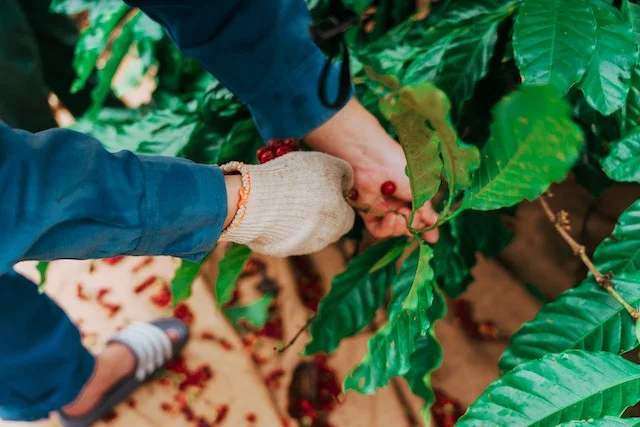
Examining Coffee Bean Attributes Relevant to Roasting
The physical characteristics of the beans impact how they absorb and conduct heat during roasting. These factors help determine ideal roasting approaches.
Coffee Species and Their Distinct Bean Features
The two main species – arabica and robusta – have differences in size, shape, density, and caffeine content that influence their roasting behavior.
Arabica vs. Robusta
Arabica coffee offers a wider range of flavors that specialty roasters can tailor via roasting. It has about half the caffeine of robusta and contains oils that give it a smoother, richer taste. Since arabica is more susceptible to diseases, its cultivation is more labor-intensive. Robusta beans have a grain-like, peanutty flavor and harsher body. With their hardiness and higher yield, they cost less to produce. Robusta is often over-roasted to mask its inferior taste.
Origin and Terroir Influence
Like wine grapes, coffee beans take on the essence of their origin’s climate, soil, elevation, and cultivation methods. Colombian beans have a smooth, clean profile. Ethiopian coffees exhibit fruity, floral notes. Sumatra variants are earthy and herbal. Roasting delicately brings out flavors of origin for single-source beans while medium roasts create balance in blends.
Coffee Bean Characteristics
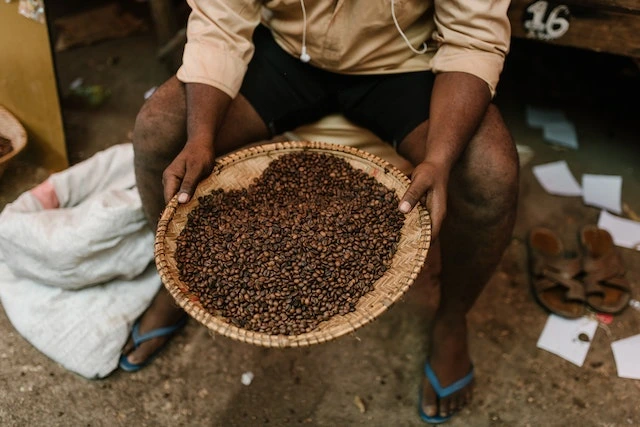
A bean’s structure, shape, density, and moisture content affect how uniformly and quickly it absorbs heat during roasting. These physical attributes help determine optimal roast times and temperatures.
Size, Shape, and Density
Arabica beans are larger and have an oval, elongated shape compared to the smaller, rounder robusta. Dense, compact beans conduct heat more slowly than lighter porous ones. Size and density impact the roasting approach, with smaller, denser beans requiring lower heat and longer roasting duration.
Moisture Content
The moisture content of green coffee beans ranges from 8% to 12.5%. Drier beans roast more quickly. Weather conditions during cultivation cause moisture content variations between crop years for the same coffee variety. Roasters keep the variable moisture levels in mind as they adapt their roast profiles.
Coffee Bean Attributes
| Bean Type | Size | Shape | Density | Moisture |
| Arabica | Large | Oval, elongated | Low density | 9-12% |
| Robusta | Small | Round | High density | 10-13% |
The Coffee Roasting Process
Step-by-Step Overview
Roasting coffee beans is a complex, meticulous process that requires skilled human senses and increasingly scientific tools to achieve the perfect roast. Here are the basic steps:
1. Green Bean Inspection
The raw green beans are manually inspected for defects, contaminants, and consistency of color and size to ensure roast uniformity.
2. Preheating
The beans are warmed to temperatures of 150°F to 180°F to prepare them for full roasting. Preheating slowly removes any residual moisture.
3. Roasting
In full roasting, beans pass through light, medium, and dark roast stages as temperatures reach over 400°F. Flavor development occurs through Maillard reactions and caramelization. Roasters sense when to end roasting based on bean color, aroma, swelling size, and audible crack sounds.
4. Cooling
The roasted beans are rapidly cooled to stop the roasting process and prevent further cooking. Quenching may use water or cold air. Proper cooling locks in flavors before bagging.
Types of Coffee Roasting Equipment
Various commercial roasting machines apply heat either directly via contact or indirectly through convection airflow. Key types include:
Drum Roasters
In this widely used style, beans tumble in a revolving perforated drum over a flame or heated air stream. The motion ensures even heating and allows observation of bean changes.
Fluid Bed Roasters
A vertical column of heated air lifts and agitates the beans to promote uniformity. The lightweight design allows swift roasting but less flavor nuance.
Hot Air Roasters
Moving belts or stirring arms keep beans suspended in a powerful hot air stream. Precise airflow control enables exact roast levels but the process is relatively slow.
Roaster Types
| Roaster | Heating Method | Bean Agitation | Duration |
| Drum | Conductive and convective | Tumbling | Average |
| Fluid bed | Hot airflow | Air suspension | Very fast |
| Hot air | Forced convection | Belts or arms | Slow |

Light Roast Coffee
Characteristics
Light roasts, sometimes called cinnamon or New England roasts, are the lightest of roasts used in coffee production. Here are their key traits:
Color and Appearance
The bean color ranges from light brown to light tan, often with a mottled effect. The dry bean shape remains intact with a matte surface showing the coffee’s characteristics of its origin.
Flavor Profile
Light roasts highlight the inherent flavors of the coffee’s origin and variety. Tasting notes detect fruitiness, brightness, and distinct acidity. The roast produces minimal caramelized sugars or roasted flavors. Lighter bodies provide a dry, tea-like finish.
Ideal Coffee Beans for Light Roasting
Beans recommended for light roasts include:
- Floral, fruity African and Ethiopian beans
- Central American beans like Costa Rica Tarrazu
- Asian beans with delicate flavors like Sumatran Mandheling
- Sweet, citrusy beans like Kona
- Colombian, Guatemalan, and Salvadoran arabica beans to accent fruit notes
Brewing Tips for Light Roast
To fully appreciate the subtle flavor notes in light roasts:
- Use manual pour-over brewing for delicate extraction
- Maintain a coffee-to-water ratio between 1:15 to 1:17
- Brew quickly at 195°F to 205°F to avoid bitterness
- Grind beans medium-fine to extract sweetness and acidity
Medium Roast Coffee
Characteristics
Medium roasts represent the most common and balanced roast levels, offering these features:
Color and Appearance
The beans take on a light to medium brown color, just before oils emerge on the surface. The shape remains largely intact but beans appear rounder.
Flavor Profile
Medium roasts strike a smooth balance between inherent bean flavors, sweetness, and roast nuttiness. Bright acidic notes are muted, replaced by caramel sweetness. The finish shows moderate body and complexity.

Ideal Coffee Beans for Medium Roasting
Some coffees suited to a medium roast include:
- Central American and South American mild arabicas like Brazilian and Colombian
- Certain African beans like Kenyan AA
- Blends featuring arabica beans from multiple origins
- Some Indonesian beans such as Sulawesi Toarco
- Hawaiian Kona and Kau coffees
Brewing Tips for Medium Roast
To highlight the characteristic smoothness of medium roasts:
- Use paper filter drip brewing for clarity
- Maintain a coffee-to-water ratio between 1:16 to 1:18
- Brew at 200°F to 205°F to extract sweeter flavors
- Grind beans medium for balanced extraction

Dark Roast Coffee
Characteristics
Dark roasts, sometimes called espresso or Continental roasts, are characterized by these traits:
Color and Appearance
The beans appear very dark brown or black with a shiny surface due to emerging oils. The bean shape is rounded with a brittle texture.
Flavor Profile
Dark roasts feature bittersweet, intense flavors with minimal origin character. Roasty, smokey notes dominate with chocolate and burnt sugar tones. The heavy body has a biting finish.
Ideal Coffee Beans for Dark Roasting
Some beans well-suited to withstanding darker roasting include:
- Indonesian beans like Sumatran and Java with earthy flavors
- Sulawesi beans retain complexity through darker roasting
- Central and South American beans like Guatemalan and Brazilian
- African beans like Ethiopian and Ugandan for fruit undertones
- Some Hawaiian Kona and Jamaica Blue Mountain beans
Brewing Tips for Dark Roast
To complement the bold intensity of dark roasts:
- Use a French press or moka pot brewing to extract thick oils
- Maintain a coffee-to-water ratio between 1:15 to 1:17
- Brew at 200°F to 210°F to develop a heavy body
- Grind beans coarse for balanced brew strength
Espresso Roast Coffee
Characteristics
Espresso roasting aims to develop the intense, concentrated flavors needed for this style, with these traits:
Color and Appearance
The very dark brown or black beans have a polished sheen from oil on the surface. The round shape is smaller than other roasts due to density loss.
Flavor Profile
Intense, bitter flavors dominate with smoke, licorice, and charcoal notes. The viscous body has a bold sweetness to cut acidity for full espresso extraction.
Ideal Coffee Beans for Espresso Roasting
Some beans able to withstand very dark espresso roasting include:
- Brazilian and Sumatran arabica beans
- Heartier African beans like Ethiopian and Kenyan
- Certain blends featuring Colombian, Guatemalan, and Indonesian beans
- Smaller grade bean sizes like Colombian Supremo
Brewing Tips for Espresso Roast
To optimize espresso roast beans:
- Pull short 1 oz. shots for ideal extraction at 90 mL in 25-30 seconds
- Use dark oily beans within 1-2 weeks for best freshness
- Store beans properly to avoid staling oils
Beyond the Basics: Specialty Roasts
While light, medium, and dark cover most roasting approaches, some specialty methods further expand options:
Single-Origin Roasts
Dedicated roasting coaxes the maximum flavor for beans from a particular farm, region or harvest. It showcases terroir characteristics.
Blended Roasts
Combining beans from various origins aims to create perfect flavor balance and complexity at particular roast levels.
Experimental Roasting Techniques
Innovative roasters use unorthodox techniques like interrupted roasts, cooling sprays, and post-roast aging to uncover new flavors.
Factors Affecting Roasting Levels
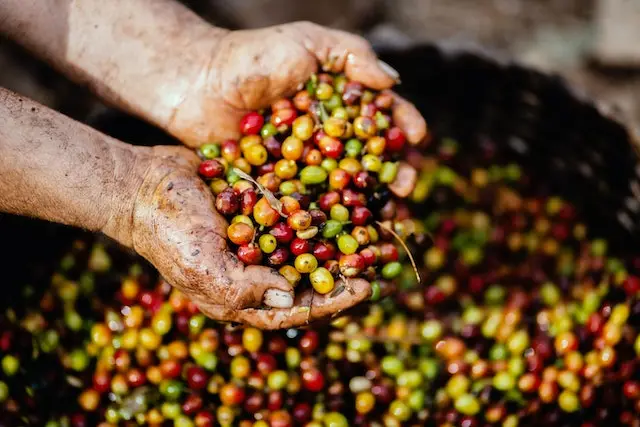
Many nuanced factors shape how dark or light the end roast turns out:
Temperature and Duration
Higher heat and longer roasting develop darker beans. Lighter beans use lower heat for shorter periods. Temperatures typically range from 370°F to 540°F.
Roasting Profiles
The programmed heat settings over time create unique roasting curves optimized for particular beans. Profiles get tailored to achieve target flavors.
Airflow and Agitation
Moving and circulating air moderates bean temperature to prevent burning. Faster airflow shortens the roasting duration for lighter beans.
Roaster Expertise
A quality roast depends on the skill, senses, and experience of the roaster monitoring changes and making careful adjustments. Their judgment fine-tunes the roast profile.
Roasting for Home Enthusiasts
While commercial methods require specialized equipment, home roasting is accessible on a small scale:
Home Roasting Methods
Some popular home-roasting approaches include:
1. Popcorn Popper Roasting
Modified hot air popcorn poppers provide a basic entry to home roasting up to 4 oz. batches.
2. Stovetop Roasting
A frying pan or wok can stir-roast beans but requires attentive monitoring to avoid burning.
3. Dedicated Home Roasters
Compact, batch roasters with control features produce 1/4 lb. up to 1 lb. for aficionados.
Safety Considerations
Home roasting requires a safe setup to avoid fire risks, smoke, and hot surfaces. Roasting outdoors is ideal.
Roasting Levels for Beginners
Lighter roasts are more forgiving for beginners. Aim for city to full city roast levels to allow room for error. Sample and tweak future attempts.
Sustainability in Coffee Roasting
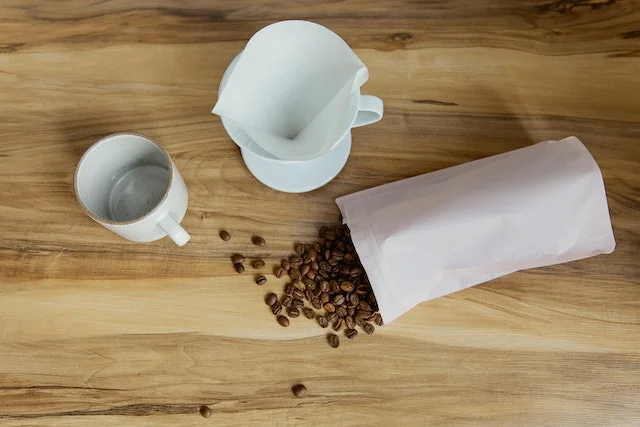
As coffee roasting technology modernizes, sustainability practices evolve as well:
Impact of Roasting on Coffee Sustainability
While growing and harvesting methods determine much of coffee’s sustainability, roasting also plays a role. Energy usage, emissions, waste disposal, and water use during commercial roasting impact the industry’s environmental footprint.
Eco-Friendly Roasting Practices
Roasters reduce environmental impact by tracking energy efficiency, investing in renewable energy, recycling water use, and composting coffee grounds.
Fair Trade and Ethical Sourcing
Many roasters support fair labor practices by sourcing beans through direct trade models at above-fair market prices when possible.
Coffee Roasting Myths and Misconceptions
Coffee enthusiasts often have misguided notions about how roasting affects flavor and composition:
Debunking Common Myths
Some roasting myths versus reality:
1. Darker Roasts Are Stronger
Darkness comes from longer roasting, not higher caffeine. Light roasts may have slightly more caffeine.
2. Light Roasts Have More Caffeine
Any small caffeine difference is counteracted by the higher coffee-to-water ratio used for lighter roasts when brewing.
Clarifying Misconceptions
Other flawed assumptions about roasting:
- Color alone does not indicate roast level or flavor
- Dark oily beans are not inherently better quality
- Blends are not necessarily superior to single-origin for espresso
- Light roasting does not sacrifice the depth of flavor
The Art of Tasting Roast Profiles

To better understand roasting nuances, formal cupping provides an insightful comparison:
Coffee Cupping Techniques
Cupping involves systematically assessing coarse grounds brewed with consistent parameters. Flavor subtleties become apparent when contrasting roasts side-by-side.
Notable Flavor Notes in Different Roasts
Tasters characterize light roasts as juicy, floral, and bright. Medium roasts exhibit balance with cocoa hints. Dark roasts feature robust spice and smoke impressions.
Developing Your Palate
Through cupping, anyone can become skilled at identifying roasting flavors from dry fragrances to finish notes. Tasting different roast levels expands your sensory vocabulary and appreciation.
The Future of Coffee Roasting
Innovations in technology and processing are reshaping commercial coffee roasting:
Emerging Trends in Roasting
Cold brew’s popularity is increasing demand for lightly roasted specialty beans. Single-origin and micro-lot profiling allows more control over unique bean characteristics.
Sustainable Innovations
Energy-efficient electronics and burner design along with eco-friendly construction materials make roasting more sustainable.
Roasting Technology Advancements
Automated roasting via artificial intelligence and machine learning models will help optimize roast profiles and bean development analysis. Apps even let roasters control equipment remotely.
Roasting Levels in Popular Coffee Cultures
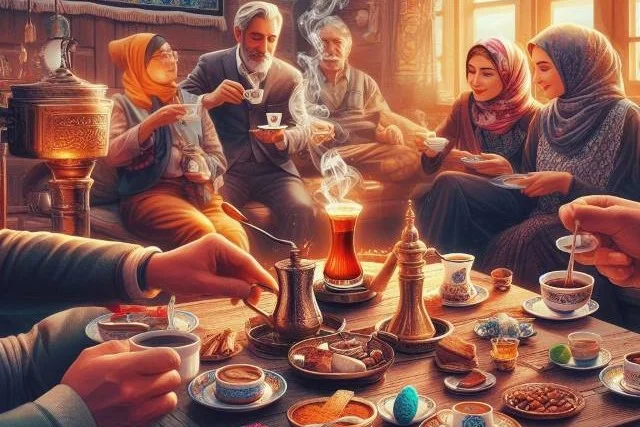
Regional coffee traditions have distinctive roasting styles:
Italian Espresso Roasting
Italy favors darker roasts that limit acidity but boost sweetness and thickness for intense espresso. Robusta beans are often added to the blend as well.
Scandinavian Light Roasting
The Nordic preference for lighter roasts preserves the nuanced flavors of beans like Ethiopian and Kenyan. Extraction is reserved to avoid bitterness.
Turkish Coffee Roasting
Turkey’s ultra-dark roast is cooked until oils appear and beans expand, creating an intense, muddy concentration ideal for its thick brewing method.
Conclusion
Varying the degree of roast profoundly transforms a coffee’s sensory profile, balancing origin and roast contributions. Mastery over different levels allows for crafting specialized coffee experiences.
Trying Different Roast Levels Yourself
Venturing beyond one’s habitual roast style often proves revelatory. Cupping various levels of the same beans illuminates roasting’s dramatic flavor impact.
Final Thoughts on Coffee Bean Roasting
Both art and science go into roasting’s flavor alchemy. The next sip you savor carries the roaster’s skillful touch in balancing inherent qualities with precisely developed roast character.
Coffee Roasting Levels FAQs
The main roast levels are light, medium, and dark roasts. Light roasts are light brown and highlight acidic, fruity notes. Medium roasts are medium brown with more balanced flavor. Dark roasts are nearly black with dominant roasted flavors and minimal acidity.
Roast level dramatically impacts coffee’s flavor profile. Lighter roasts preserve more acidity and origin character. Darker roasts develop more bittersweet, roasted flavors as sugars caramelize and acids break down during prolonged heating.
Roast level depends on roasting duration, temperature, airflow, the customized roast profile or heat curve, and the skill of the roaster in making adjustments. Longer, hotter roasting produces darker beans.
Common commercial roasting machines are drum roasters, which tumble beans in a rotating drum; fluid bed roasters that use hot air to agitate beans; and hot air roasters that use forced convection and belt/arm mechanisms to roast beans in a powerful hot air stream.
Home roasting methods include using modified popcorn poppers, oven roasting in a pan or oven, and dedicated small-batch home roasters. Beginners should start with lighter roasts and proper safety precautions. Outdoor roasting is ideal.



